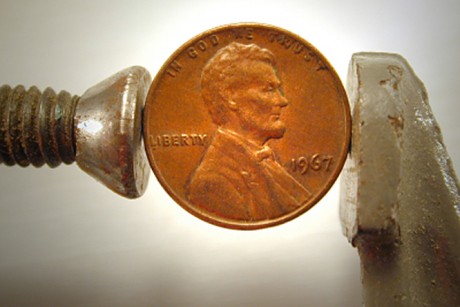If it will make you feel better, go ahead an call me cheap. It wouldn't be the first time. But please don't hate me because (I'm beautiful, and) when I've got the time and energy, I love to work with financial software. I like the math and logic that goes with it.
Long long ago, I used MS Money. I've used Excel, GnuCash, I've dealt with Quickbooks, and am now using You Need a Budget (YNAB). I will review YNAB today. If you are unlike me in my lust for logic, YNAB is even better for you than the other software I listed.
YNAB is different in that it is a budgeting software, not an accounting software like the others. It lives in the now, not the future. It also lives by 4 rules
- Give Every Dollar A Job
- Save for a Rainy Day
- Roll with the Punches
- Live on Last Month's Income
Pretty straight forward, but the toughest one to a lot of people is #1. You Must allocate every dollar you have to something. #2 is pretty obvious. The software helps you out with #3 in case you go a little over in a category once in a while to make up for it elsewhere. And #4 is the ultimate, but difficult, goal - only spend money you have right now, not what you'll have in your next paycheck.
If you're familiar with Dave Ramsey's methods (if not, skip ahead to the next section), this software uses similar principles. I'm not a DR follower, but I've always thought the ideas were pretty danged basic. Don't spend what you don't have. I still use credit cards, but I pay the full balance off every month. I don't believe in going to all cash. I tried that and it was too much trouble keeping up with envelopes and this and that cash. (It's easier to use YNAB as you'll see below). I also believe that you can never be too prepared. If you are a woman, this goes double for you since it's harder for us to get good credit than men in our system.

By maintaining a credit card and paying it off every month, you keep your credit score up. I know DR thinks credit scores are for losers, but we live in a world of credit scores. If you're disciplined with your credit card and change the way you think about it, it's not a problem. If you can't change your habits with them and YNAB, then you're probably destined to have financial issues. I also have a mortgage, because really, who can shell out that much money at first?
YNAB actually tracks budget categories for you so that you know how much you've spent in each category. It's also got lots of features with the budget to help you plan and calculate for the future.
Yeah, pretty simple.
YNAB also really wants you to follow its methods, so it makes it a little difficult to cheat. There are ways around their structures, but if you're going to be a good budgeteer, the software works well.
And it cost me $60 if you were wondering (which covers multiple computers in our household).
Do you have an annual payment of a bill and when it comes that time of year, you freak out because it's due? YNAB will help with that. I have a number of these bills. Let's take flood insurance. (Yes, I live in an area that is more prone to drought than flooding now, but I've lived through two hurricanes, including Katrina after which I got flood insurance and have had it every since. I reiterate, you can never be too prepared.) Anyhow, let's say the flood insurance is due in December and is $300. Each month, you "budget" $25 for flood insurance. Come December, you'll have saved $300 and will easily be able to pay your bill.
Also, if you under spend one month, you'll have extra in that category the next month. Let's say you have $50 budgeted for eating out per month. If you don't eat out at all, then the next month, you'll have $100 to eat out with. Although, you could also alter another budget category to take the extra. It works in reverse as well. Let's say you ate out $60 worth. The next month you'd have $40 to eat out with.
This is the essence of budgeting.
I swiped this screenshot from another site reviewing YNAB so that you could see good examples of what I'm talking about:

In this example, you have $4000 in your budget for June. You divide it up in the left column into whatever categories you want.
As you enter transactions into the accounts section of the software, the totals show up in the middle column. This is what you've spent under that budget category.
The column on the right shows you the difference between what you've budgeted and what you've spent. You can see this on a monthly basis. You can budget until the end of time, but you can only spend in the past and present. That also goes for income. If you haven't gotten your paycheck yet, it's not available to spend. It'll show up as a negative balance.
YNAB let's you name your categories and subcategories whatever you like. You could be more fun than I and give them names like Fred and Barney. I love categorizing!

If you put all the money you're not going to use for a while (such as said flood insurance) into a savings account, you will earn more interest than if you leave it in your checking account. I know interest rates right now are in the crapper, but I still like the idea that I can make money by just transferring to another account even if it's only 30 cents a month ($3.60/year). And if you screw up somewhere in your budgeting, having your money in separate accounts helps a lot (ie emergency fund never gets touched).
Update: They have added a feature since writing this post to be able to look at all transactions from all accounts, which helps to satisfy my need for multiple account management.
2. You can only create budget categories for "budgeted" accounts. Transferring from one account to another does not allow for categorizing. I know I'm going a little beyond the basics for a review here, but my OCD self would categorize everything in the whole world if I could.
I wish they had a "version" for advanced budgeteers / cheapskates or something.

For the beginner or the cheapskate:
Budget = Good
YNAB = Good
If Julius Rock (Chris Rock's dad - see Everybody Hates Chris) had YNAB he would love it! That's 4 cent worth of Koolaid somebody left!

I give YNAB 4 buttons up - I'd like more customization, but that's just me.
If you're familiar with Dave Ramsey's methods (if not, skip ahead to the next section), this software uses similar principles. I'm not a DR follower, but I've always thought the ideas were pretty danged basic. Don't spend what you don't have. I still use credit cards, but I pay the full balance off every month. I don't believe in going to all cash. I tried that and it was too much trouble keeping up with envelopes and this and that cash. (It's easier to use YNAB as you'll see below). I also believe that you can never be too prepared. If you are a woman, this goes double for you since it's harder for us to get good credit than men in our system.

By maintaining a credit card and paying it off every month, you keep your credit score up. I know DR thinks credit scores are for losers, but we live in a world of credit scores. If you're disciplined with your credit card and change the way you think about it, it's not a problem. If you can't change your habits with them and YNAB, then you're probably destined to have financial issues. I also have a mortgage, because really, who can shell out that much money at first?
Ok, stepping down now...
Yes, but how does YNAB work?
Basically, you have your accounts (checking, credit cards, loans, etc.) and you have your budget. Pretty simple, I know, but the biggest difference is the budget. The rest of the software revolves around your budget. Other accounting software I've used revolve around your accounts and transactions and might have a flimsy budget area.YNAB actually tracks budget categories for you so that you know how much you've spent in each category. It's also got lots of features with the budget to help you plan and calculate for the future.
Yeah, pretty simple.
YNAB also really wants you to follow its methods, so it makes it a little difficult to cheat. There are ways around their structures, but if you're going to be a good budgeteer, the software works well.
And it cost me $60 if you were wondering (which covers multiple computers in our household).
Features I like
Rolling Balances
Also, if you under spend one month, you'll have extra in that category the next month. Let's say you have $50 budgeted for eating out per month. If you don't eat out at all, then the next month, you'll have $100 to eat out with. Although, you could also alter another budget category to take the extra. It works in reverse as well. Let's say you ate out $60 worth. The next month you'd have $40 to eat out with.
This is the essence of budgeting.
I swiped this screenshot from another site reviewing YNAB so that you could see good examples of what I'm talking about:

In this example, you have $4000 in your budget for June. You divide it up in the left column into whatever categories you want.
As you enter transactions into the accounts section of the software, the totals show up in the middle column. This is what you've spent under that budget category.
The column on the right shows you the difference between what you've budgeted and what you've spent. You can see this on a monthly basis. You can budget until the end of time, but you can only spend in the past and present. That also goes for income. If you haven't gotten your paycheck yet, it's not available to spend. It'll show up as a negative balance.
Makeup your own budget categories
The categories listed above are what that guy made up. Mine look different. My master categories are based on how often they change rather than being descriptive of the subcategories. I have:- Regular recurring (same amount every month)
- Vary a little (cell phone - might use an extra text or two)
- Vary greatly buffer (the electric bill is a lot higher in the summer than winter, but I budget the same for every month so it's spread out)
- Never know (groceries vary every month, but I still stay around the budgeted amount)
- Rarely use (ATM fees, etc.)
- Periodic payments (flood insurance)
- Savings (auto repair, just in case, etc.)
YNAB let's you name your categories and subcategories whatever you like. You could be more fun than I and give them names like Fred and Barney. I love categorizing!
Everything important is up front
You don't have to do separate calculations to see what you've budgeted and how much you've spent for each category. It's right there in front of you.
You can see all your account balances. They're always there on the left side of the screen.
No more Excel
You don't have to use Excel in addition to YNAB since it really does provide you with what you need to maintain a budget. I have always used Excel and a financial software since I like to tweak my budget. Not needed with YNAB. Oddly enough, this no excel image was readily available on a google search.
What I don't use
I just don't use some of the features of YNAB. Not that they're bad, but they are just not useful to me.
Reports
If I could make my own reports, I'd love it because I like customizing things for me. Everything else is basically right up front in the budget, so I don't need the reports.
Cloud Storage
They use Dropbox. I tried using it at first, but it made my little computer ssssslllllllloooooowwww. So I don't use it. But I do have an online backup plan (you can never be too prepared).
What I don't like
As I mentioned above, YNAB does not like to accommodate you if you want to skirt around its rules. Some things I do are good for my finances but other people can abuse and may be a little confused by, so they don't offer features to handle those things or are just not as friendly. The biggies for me are, I really don't want to have just one account which is the ultimate goal, I think, for YNAB users.YNAB does not make it easy to...
1. Use multiple accounts. You can, but it's a little more difficult than if you just had one account. It's still better than other financial software, though.If you put all the money you're not going to use for a while (such as said flood insurance) into a savings account, you will earn more interest than if you leave it in your checking account. I know interest rates right now are in the crapper, but I still like the idea that I can make money by just transferring to another account even if it's only 30 cents a month ($3.60/year). And if you screw up somewhere in your budgeting, having your money in separate accounts helps a lot (ie emergency fund never gets touched).
Update: They have added a feature since writing this post to be able to look at all transactions from all accounts, which helps to satisfy my need for multiple account management.
2. You can only create budget categories for "budgeted" accounts. Transferring from one account to another does not allow for categorizing. I know I'm going a little beyond the basics for a review here, but my OCD self would categorize everything in the whole world if I could.
I wish they had a "version" for advanced budgeteers / cheapskates or something.

In Summary
If your head is spinning from my review, here's a summary of what I said.For the beginner or the cheapskate:
Budget = Good
YNAB = Good
If Julius Rock (Chris Rock's dad - see Everybody Hates Chris) had YNAB he would love it! That's 4 cent worth of Koolaid somebody left!
I give YNAB 4 buttons up - I'd like more customization, but that's just me.

.jpg)


No comments:
Post a Comment